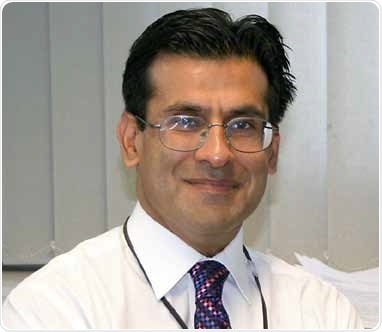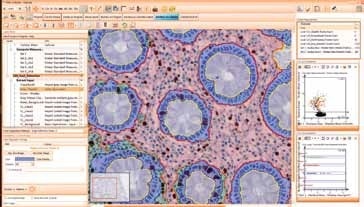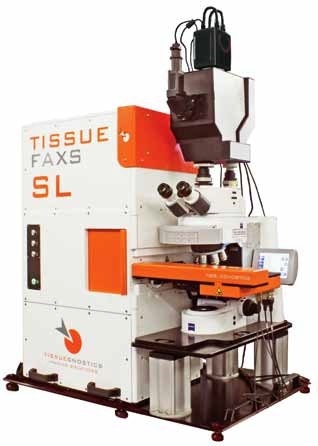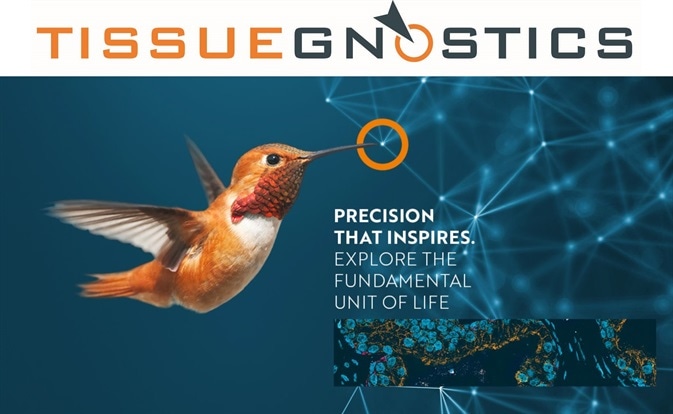A molecular pathologist at the University of Nottingham in England and an expert in all things related to precision medicine, Mohammad Ilyas explained how knowledge about a patient’s genetic parameters can aid in the selection of a therapy and so improve the chances of recovery.
“As a rule, medical treatment is based on statistical probabilities,” he says. “So when a patient with disease B is treated using treatment A, this decision is based on several years of experience or on data from clinical studies which show that disease B is most likely to respond to treatment A. However, every doctor knows not all patients react in the same way and, indeed, in the case of some patients with disease B, treatment C will be more effective.”
Individual Therapy as a Goal
Ilyas says the ultimate goal in medicine is to individually help each patient, in a targeted manner, and not according to probability: personalized medicine. This point of view also requires observing the patient from a holistic (diagnostic) perspective.
Information from at least six different categories is necessary to offer truly personalized medicine. These are the “6 Ps of precision medicine”:
- Profile: this information is derived from a comprehensive analysis of the diseased tissue (including DNA, RNA and protein analyses). It describes specific transformations that have arisen as a result of the disease.
- Predictive: this information gives us an idea of the therapies which could be used to treat a specific disease. This information comes from a comprehensive analysis of the diseased tissue.
- Prognostic: this information tells us about the disease’s biology and how it is likely to progress. This information is collected from detailed analyses of the diseased tissue.
- Predisposition: this information tells us about the risk of developing a disease; this information is collected from analyzing a patient’s DNA germline.
- Pharmacotherapeutic: this information identifies the molecules specific to a disease, which could be targeted during treatment. The source of this information is an in depth analysis of the diseased tissue.
- Pharmacogenetic: this information tells how a person will respond to a particular medication; it is collected it from analyzing a patient’s DNA germline.

© Mohammad Ilyas
Tissue Analysis
Pathology includes, in practice, the analysis of diseased tissues to make a diagnosis, it can be defined as “disease investigation.” In its most basic form, pathology involves observing the diseased tissue under a microscope. An experienced pathologist can tell which disease is present by looking at the image under the microscope.
However, over the past few years, advances in technology have notably increased the amount of data which can be taken from tissue analyses, and some analyses are already automated. Specifically, methods like next generation sequencing (NGS) produce a very detailed analysis of RNA and DNA from healthy and diseased tissue achievable.
Developments in proteomics also allow a very detailed analysis of proteins, and in much the same way cytomics permit the analysis of tissue in an objective, automated way. Big data stemming from cytomics, genomics, and proteomics can be analyzed employing the newest data mining methods, and new clinically significant patterns can be recognized in the data.
These techniques encompass everything from sophisticated bioinformatic approaches to contextualised analysis of all data to novel algorithms that analyze digitized images of tissue based on artificial intelligence (AI).
These characteristic patterns can be categorized as one of the “6 Ps,” which means that pathology has a crucial role in the provision of data and can allow personalized medicine to become a reality.
Precision medicine and personalized medicine have in essence been around for a long time. Beatrice Knudsen, Professor of Biomedical Sciences and Pathology at Cedars-Sinai Medical Center in Los Angeles, who was interviewed by medianet, says that these days we are expected to use the concepts of precision medicine as often as possible in research.
It can be seen that the topics of precision medicine and personalized medicine are at the top of everyone’s lists after talking to six global research centers. According to Thomas J. Diefenbach, the Co-director of the Ragon Institute Imaging Core of MGH, MIT and Harvard, a crucial feature incorporating genetic information into patient care is already a key part of clinical research and treatment in the Boston area.
Available since 2001, the Partners HealthCare Personalised Medicine center, provides assistance in terms of the use of genomic and genetic information, both for medical training purposes and in clinical practice. Financing for these types of programmes is already a part of American research clinics’ operating budgets.
In 2016, the National Institute of Health (NIH) allocated millions of dollars towards the creation of four additional centers within the national network of Health Care Provider Organizations, which implement, the Precision Medicine Initiative (PMI) Cohort Program.
Diefenbach
In Boston and surrounding areas, precision medicine and personalized medicine have already been integrated to a significant extent.
Financing in Brazil
Henning Ulrich, a professor of Biochemistry at the University of São Paulo says that similar public subsidy programmes are also available in South America. Brazil’s public foundation “CNPq” for example, invites tenders for research programmes on specific diseases; these programmes include research on regenerative medicine and the early recognition and treatment of diseases.
His working group carries out research on neurodegenerative diseases and regenerative medicine. “In this case, we need precise histological recording and analyses of brain slices,” he states, also stressing that he utilizes the system which has been developed by TissueGnostics, the Austrian company.
“In my opinion, the TissueGnostics systems are becoming more and more important for both basic and applied research. Furthermore, these systems should be in every pathology lab.”

© TissueGnostics
HIV Focus in Africa
Personalized medicine is utilized in Africa, to develop new therapies for HIV/Aids, among other conditions. Zaza Ndhlovu from the University of KwaZulu-Natal in South Africa says that people react to the HIV virus differently, and we could learn from those who can keep the virus in check because of their genes.
Funding for health research in South Africa is provided through the Medical Research Council (MRC), which is the South African equivalent of the NIH in the USA.
“The MRC funds several different health research programmes, including those which focus on innovations in healthcare, thanks to strategic partnerships and grants which are administered by the Grants Innovation and Product Development (GIPD) unit.”
Public funding for genomics centers in Durban and Cape Town also has the capability to promote the development of personalized medicine in South Africa. Dr Ndhlovu says that this fits with the approach in traditional African medicine, where illnesses are viewed holistically.
“According to traditional medicine, an illness is not only a physical disorder; rather, it is assumed to be the result of an imbalance between the patient’s physical, spiritual, moral and social conditions. This is why traditional patient management is very personalised because everything depends on the patient’s individual circumstances.”
A professor at the Yong Loo Lin School of Medicine at the National University of Singapore, Makoto Yawata, also feels that cooperation between industry and public institutions is important, “I think it makes sense because every diagnostic and therapeutic product essentially requires a commercialisation stage.”
As is the case in Japan and the United States, Singapore also requires platforms to gather detailed phenotypic, genetic, and health-related information from patients so that it can optimize treatment and diagnostic options.
“We will need to develop algorithms so that we can analyze massive data sets from every patient to make effective clinical decisions. Singapore, like the USA, is made up of many different ethnicities and hence has a great deal of human diversity. In terms of truly personalised medicine, it is a challenge for doctors here.”
Systems like the one established by the Austrian company TissueGnostics could be useful in these cases. TissueGnostics’ system is also employed by Professor Guoguang Ying at the Tianjin Key Laboratory of Cancer Prevention and Therapy,
“TissueGnostics has developed the most effective system to date for tissue imaging and data analysis. It provides researchers and molecular therapists with useful tools for obtaining valuable molecular profile information. This information is important for diagnosing diseases and mechanisms.”
Molecular profiling is at the heart of precision medicine. In particular, it is embodied in genomic, proteomic and localization information which is verified and collected through a number of methods like chipping, sequencing, and immunohistochemical staining.

Made in Austria TissueGnostics systems are in demand at leading universities around the world, as the medianet interviews in the Americas, Asia and Africa have shown. (© TissueGnostics)

About TissueGnostics
TissueGnostics (TG) is an Austrian company focusing on integrated solutions for high content and/or high throughput scanning and analysis of biomedical, veterinary, natural sciences and technical microscopy samples.
TG was founded by scientists from the Vienna University Hospital (AKH) in 2003. It is now a globally active company with subsidiaries in the EU, the USA and China and customers in 28 countries.
TG systems offer integrated workflows, i.e. scan and analysis, for digital slides or images of tissue sections, Tissue Microarrays (TMA), cell culture monolayers, smears and of other samples on slides and oversized slides, in Microtiter plates, Petri dishes and specialized sample containers.
Sponsored Content Policy: News-Medical.net publishes articles and related content that may be derived from sources where we have existing commercial relationships, provided such content adds value to the core editorial ethos of News-Medical.Net which is to educate and inform site visitors interested in medical research, science, medical devices and treatments.